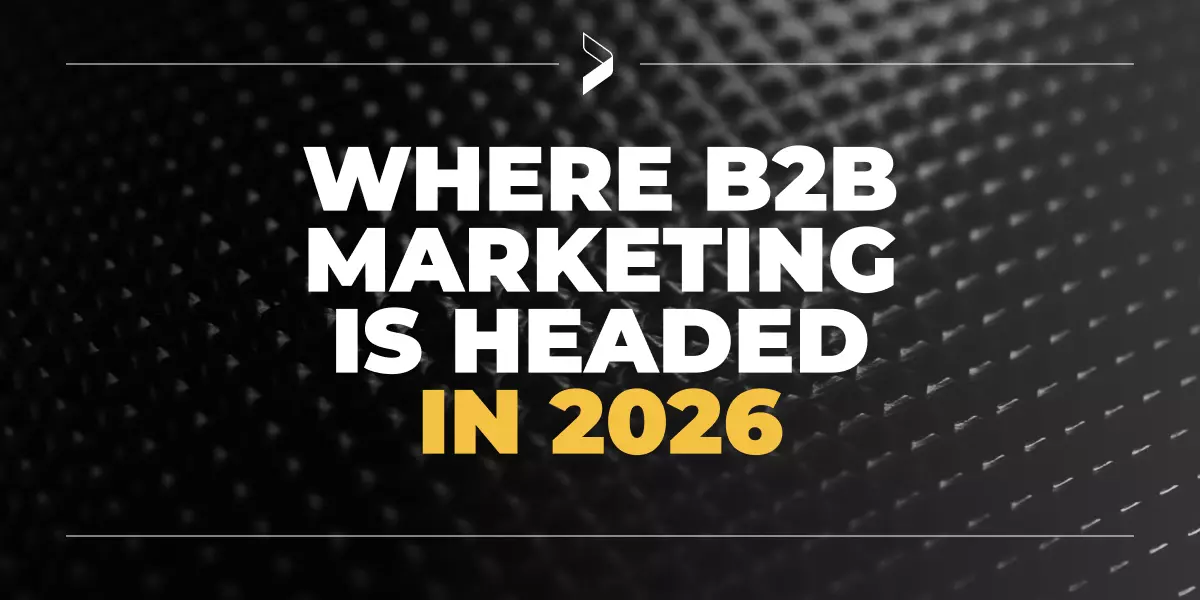Navigating the Cookie-Less Future: A Marketer’s Road Map

Well, Google did it again. Just as we were ready to roll out updated communication and begin an audit of digital media programs in anticipation of a Q3 2024 deadline, Google pushed out the date for third-party cookie deprecation to early 2025. Godfrey has been following Google’s updates since they first announced the change in 2021 to ensure our programs made any necessary shifts, including blog posts around programmatic advertising and zero- and first-party data strategies.
The ANA published an article quoting many marketers who aren’t confident the new deadline will hold, or that Google will ever fully go through with it. Approaches to address the changes continue to evolve, but this transition extension is a good opportunity to shore up best practices and plan for necessary shifts in strategy. Here are some things to keep in mind as we approach planning for 2025, as well as some immediate steps that can be taken now to build stronger first-party data.
Understanding the Shift
Google’s decision to eliminate third-party cookies is largely influenced by heightened global privacy concerns and stricter data protection laws, such as the GDPR, CCPA and others. In response, Google has been developing the Privacy Sandbox, a set of technologies aimed at ensuring privacy while still allowing targeted advertisements. This continues to be tested, which is one of the reasons for the consistent delays.
However, the end of third-party cookies will fundamentally change how we target and measure digital ads.
The Immediate Impact for Marketers
The loss of third-party cookies affects several areas of digital marketing:
- Targeting: Marketers will lose the ability to conduct precise behavioral targeting and retargeting across the web.
- Attribution: It will be more difficult to track users’ cross-site interactions and thus accurately attribute conversions.
- Privacy Policies: Based on the platforms leveraged, privacy policies will need to be updated to account for the legal and technical implications.
Despite these challenges, we do have robust tools and strategies at our disposal that can help bridge the gap left by third-party cookies.
Strategic Adjustments for a Cookie-Less World
1. Prioritize First-Party Data
The deprecation of third-party cookies makes first-party data invaluable. Collecting direct data from your customers — whether through interactions on your website, CRM systems or customer feedback — provides a solid foundation for personalized marketing efforts. We should focus on enhancing data capture mechanisms, ensuring data cleanliness and leveraging sophisticated data segmentation to target the right audiences effectively.
2. Enhance Contextual Targeting
Contextual targeting doesn’t rely on personal data, making it a powerful tool in a privacy-focused world. This strategy involves placing ads in relevant digital contexts — think advertising gardening tools on gardening blogs. By aligning ad placements with content, we can achieve relevance and engagement without infringing on user privacy.
3. Expand Use of Consent-Based Marketing
With privacy concerns on the rise, gaining explicit consent from users becomes crucial. Tools like web push notifications, email marketing and chatbots can be effective, provided they are used in a way that respects user consent. These tools not only comply with privacy regulations but also build trust with your audience.
4. Adopt Advanced Attribution Models
As direct tracking via third-party cookies wanes, we need to rely more on alternative attribution models. Techniques like unified ID systems, probabilistic matching and media-mix modeling provide new ways to understand consumer behavior and measure marketing effectiveness across different channels and touch points.
5. Leverage Machine Learning and AI
Artificial intelligence and machine learning can analyze large sets of first-party data to uncover patterns and insights that were previously gleaned from third-party cookies. These technologies can predict customer behavior, optimize real-time bidding strategies and personalize user experiences without compromising privacy.
6. Explore Second-Party Data Partnerships
Second-party data — data shared between trusted partners, like trade publications or LinkedIn — can be a valuable asset for filling in the gaps left by the absence of third-party data. Forming partnerships with organizations that have direct relationships with their audiences can provide access to a richer, consent-driven data pool.
7. Stay Agile and Keep Testing
The digital marketing landscape is continuously evolving. Staying agile — ready to test new tools, adopt emerging technologies and pivot strategies — is crucial. Regularly experimenting with new approaches will help identify what works best for reaching and engaging your target audiences in this new environment.
What’s Next
The phasing out of third-party cookies is a significant challenge, but it also presents an opportunity for innovation and competitive advantage. By prioritizing first-party data, exploring new technologies and maintaining a flexible approach, we can not only adapt but also excel in this evolving landscape.
This shift toward a more privacy-focused era is not just about compliance; it’s about respecting our customers and building deeper trust. As we adjust our strategies, let’s take this opportunity to reinforce our commitment to privacy and transparency, ensuring our marketing efforts are both effective and ethical. It’s an opportunity to enhance our marketing strategies and strengthen our relationships with our customers.
Sign Up for our Newsletter - Get agency updates, industry trends and valuable resources delivered directly to you.
Alison Fetterman Adams - Vice President, Strategy & Analytics
Alison leads the strategy and analytics teams, focused on driving insightful and innovative ways to connect with clients’ audiences and clearly show a strong ROI for Godfrey’s B2B marketing programs.




